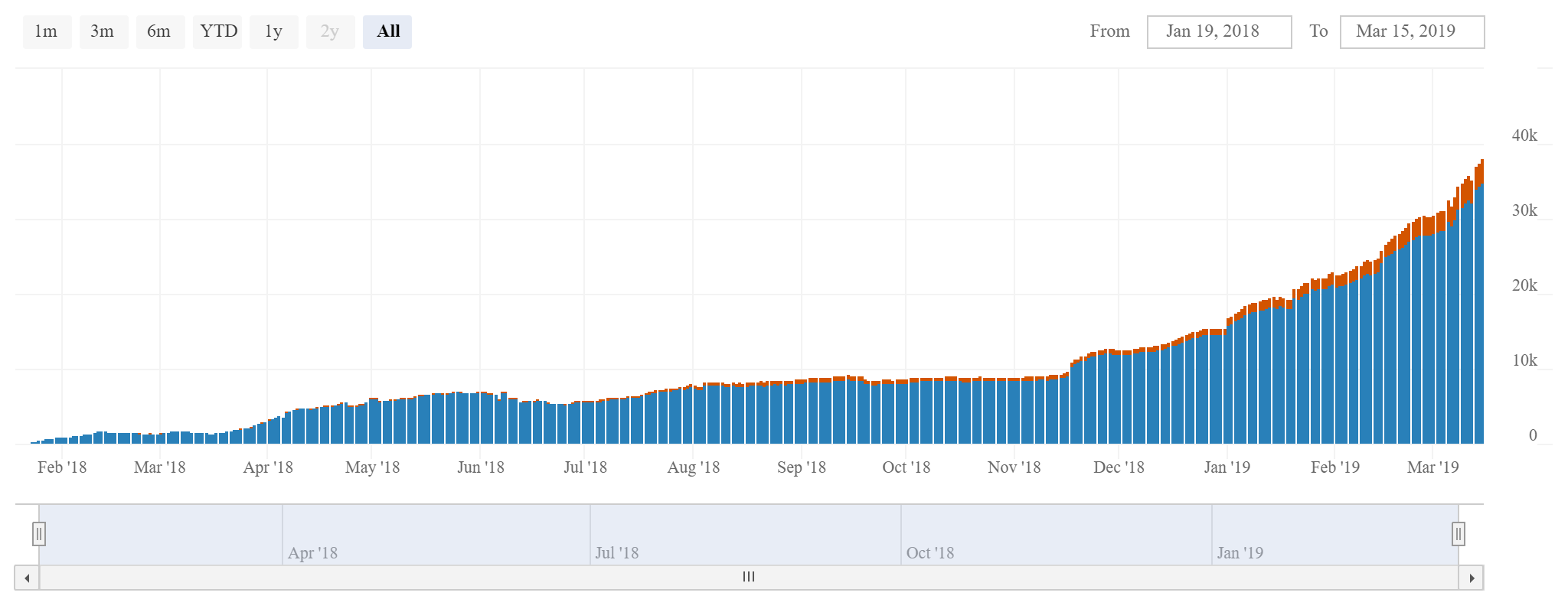The Lightning Network turned one year old on March 15, closing off its first year on a high note.
The sidechain that was created to help Bitcoin (BTC) scale easier had been in development before its release for some time. While, in theory, it was a promising solution, no one really knew how it would actually fare in practice.
SponsoredFast forward one year, and the Lightning Network is able to boast an impressive network growth with constant month-on-month increases in capacity. Starting out with just three bitcoins, its capacity has now reached 1000 BTC dedicated to the network.
LN passes 1000 btc capacity on the 1st year anniversary.#bitcoin https://t.co/J570UzBlaZ
— Ansel Lindner (@AnselLindner) March 16, 2019
An Evergrowing Web
The Lightning Network’s capacity is distributed across 39,000 payment channels over 7000 nodes. Overall, the metrics of the network have been constantly improving across the board. Geographically, there are nodes operating all across the globe; however, most of them are located in North America (50 percent) and Europe (37 percent).
The Lightning Network has been designed as a peer-to-peer network in which users can transact via channels with each other without over-loading the Bitcoin (BTC) network. As such, not only does Lightning enable quick transactions with low fees but it also enables micro-payments with Bitcoin.
Sponsored
Lightning’s Accomplishments
The Lightning Network has seen its share of criticism. Most of it has been centered on the concentration of its capacity in a relatively low number of nodes. However, if the network continues to grow at a steady pace, its centralization issues should dissipate in time.
One thing to keep in mind is that, similar to Bitcoin in its early days, the Lightning Network should be regarded as a work in progress. Both the technological side and the adoption process of the network have upside potential that should come to fruition with steady development.
Nevertheless, the community has already demonstrated the snowball effect awareness and adoption can have by passing the Lightning Torch throughout the network, even reaching prominent names like Twitter CEO Jack Dorsey.
Towards the end of its first year in production, the Lightning Network has also seen one of its value propositions implemented in a Chrome application. At the beginning of 2019, the Tippin extension has taken over the cryptocurrency community, allowing its users to send tips to each other on Twitter.
Considering the traction the Lightning Network has gained in its only first year, it is safe to assume developers will be motivated to further work on it and build on top of it. Subsequent years might not have the same flashy numbers — but during its first year, a strong foundation has already been built around lightning.
What do you think of the Lightning Network? Will it continue its impressive growth in 2019? Let us know in the comments below!

